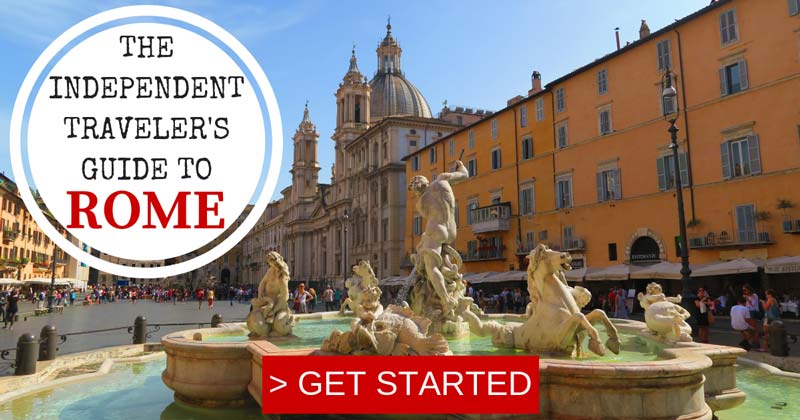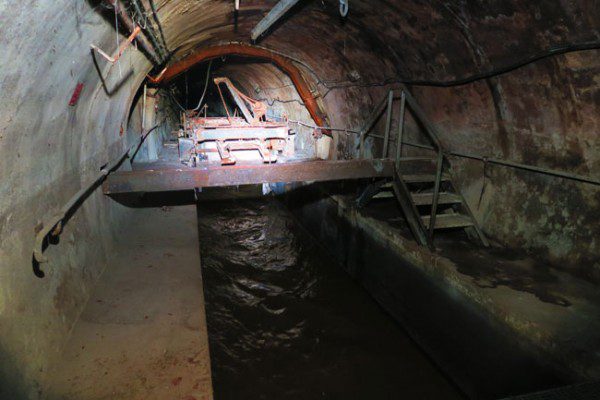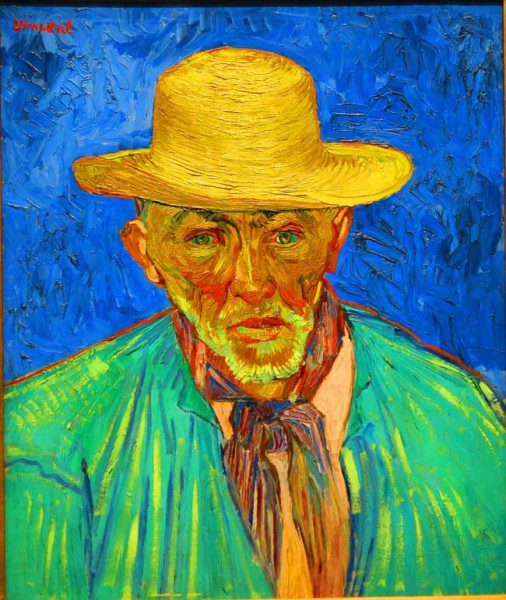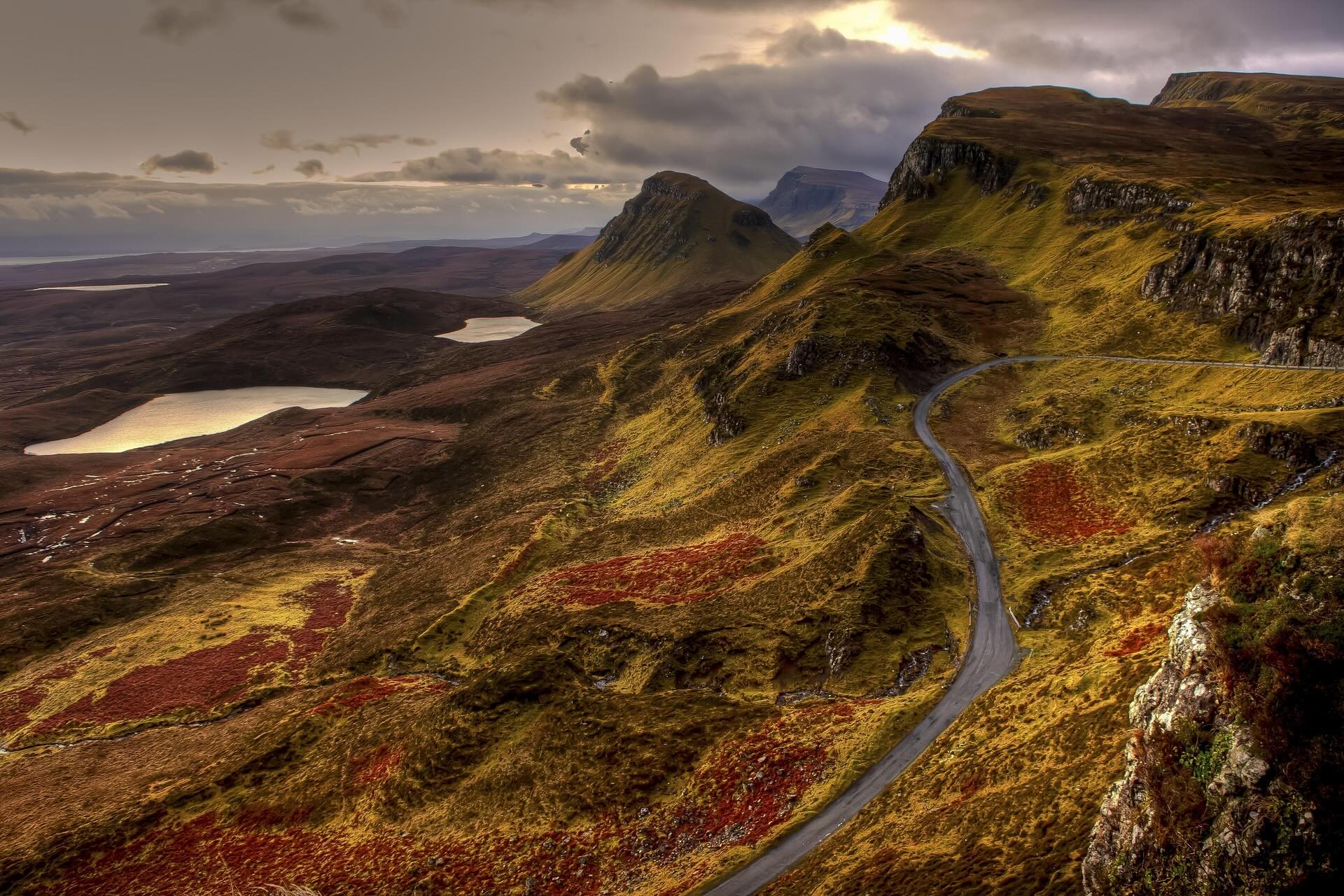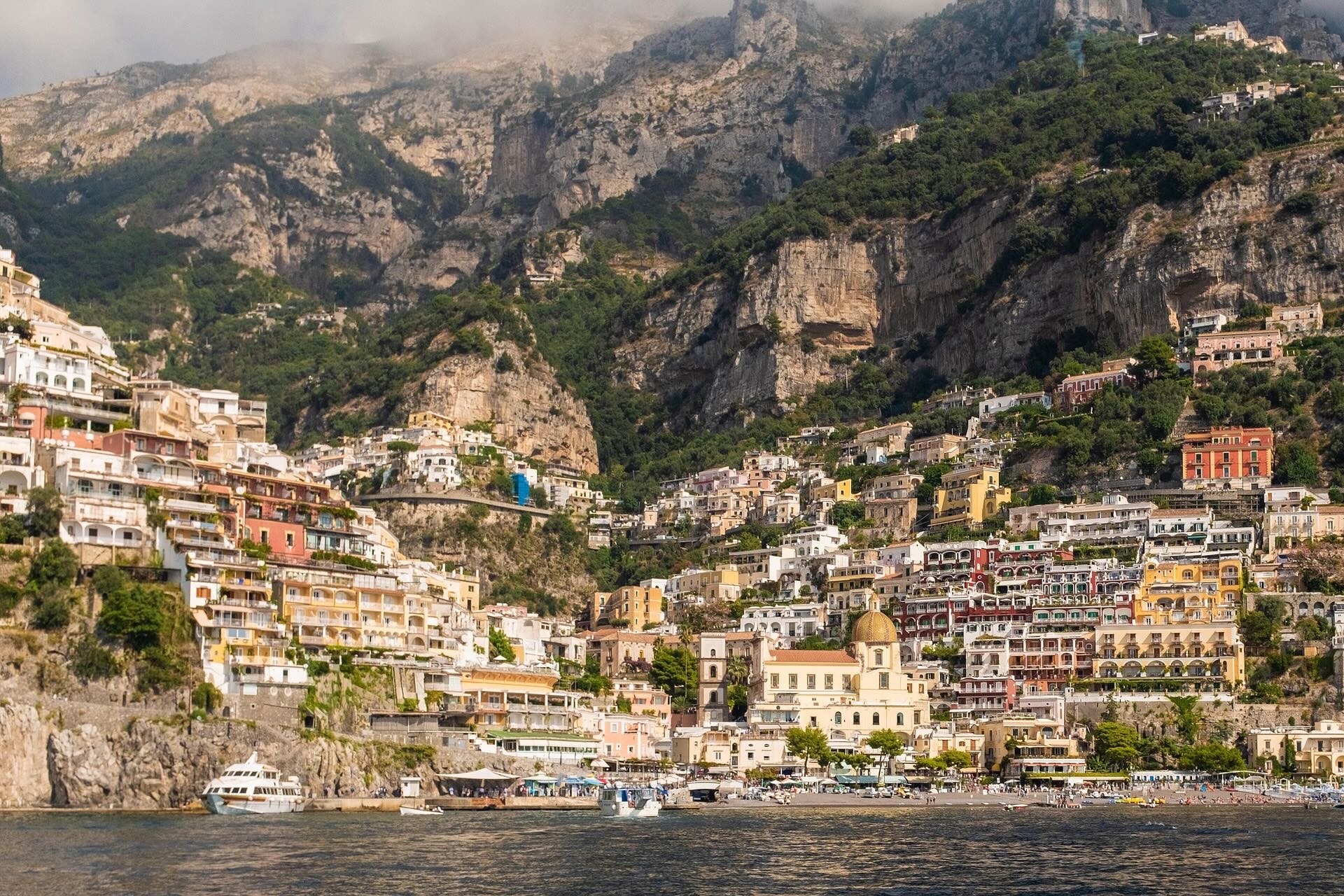Best Museums In Rome
With a history spanning three millennia, it’s no surprise to find some of the world’s top museums in the Eternal City. In fact, from ancient Rome to the treasures of the Vatican, merely taking a stroll in the streets of Rome is like walking in an open-air museum, not to mention the city’s marvelous churches. In this guide, I’ll share with you the best museums in Rome and how to optimize your experience around the city’s top museums.
Rome Travel Guide Collection
Planning or thinking about a trip to Rome? Have a look at additional Rome travel guides, including essential Rome travel tips, a detailed Rome itinerary and lots more!
Quick Tour of Rome
Here’s a quick video tour of Rome!
- What to do on a rainy day in Rome? The city’s indoor museums are a particularly good idea as well as on overly warm days.
- Advanced tickets: for most of the best museums in Rome, this is highly recommended or else you’ll be waiting for hours in line in certain cases. Purchasing your tickets in advance usually also comes with priority skip-the-line access.
- Museum passes: if you plan on doing a lot of sightseeing and not relying solely on your feet for getting around Rome, check out the Omnia Rome & Vatican Pass and the Roma Pass. Each offers entry to a different set of attractions (perhaps with some overlap) as well as other perks. I did the math and found them to be too expensive for what I was looking for, but they might work for some. Keep in mind that even when you purchase the pass, you might still need to book a specific time directly on the website of the attraction.
- Free access: check the various museum websites for possible free access on the first Sunday of each month.
- Opening times: carefully check the opening times of the various museums as not all are open throughout the week and some restrict access a few hours before closing. I did my best to include accurate information in this guide.
- Special access: some museums offer extended visits beyond general admissions, such as touring the Vatican gardens for example. This suits those who are flexible with their time and those seeking to deeply explore a particular site.
- Food and drinks: especially true if you’re visiting Rome with children, it’s wise to pack some snacks and water. You’ll be doing a lot of walking. That said, some museums (such as the Capitoline Museums), require visitors to leave their bags in a secured locker (free of charge).
- Be mentally prepared: Rome’s best museums are always busy, especially during peak season. It’s important to prepare for what you’ll be up against and to set expectations, especially with children. In addition, in some areas of Rome (such as the Colosseum and the Vatican), you’ll be constantly approached by people trying to sell you tours and tickets.

Villa Farnesina
Overlooking the Tiber River on the Trastevere side of Rome, Villa Farnesina is a museum not frequented by the masses but nonetheless very impressive, especially for its frescos. It is a Renaissance-era villa built between 1506-1510 for the wealthy banker Agostino Chigi from Sienna, who lived there until his death in 1520. Chigi was seeking a luxury estate close the seat of the Pope where the center of power was centered at the time. The villa became the property of the Farnese family in 1579, hence the present name Villa Farnesina.
Apart from the manicured gardens (closed at the time of our visit), the villa’s highlights are its frescos and painting, worked by several legendary Renaissance artists.
The first major highlight in the villa is the Loggia of Galatea, a fresco painted by several artists including one Raffaello Sanzio da Urbino, better known as Raphael. Its most striking feature is that of a nymph riding a sea shell canoe drawn by dolphins.
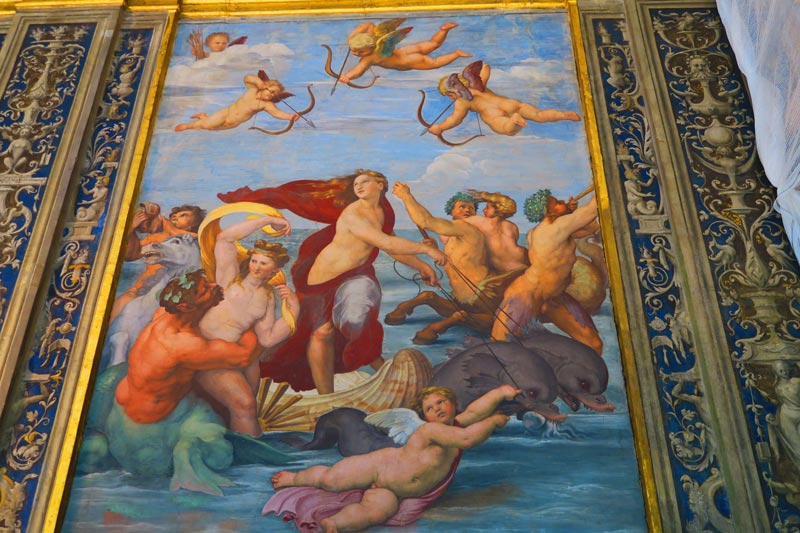
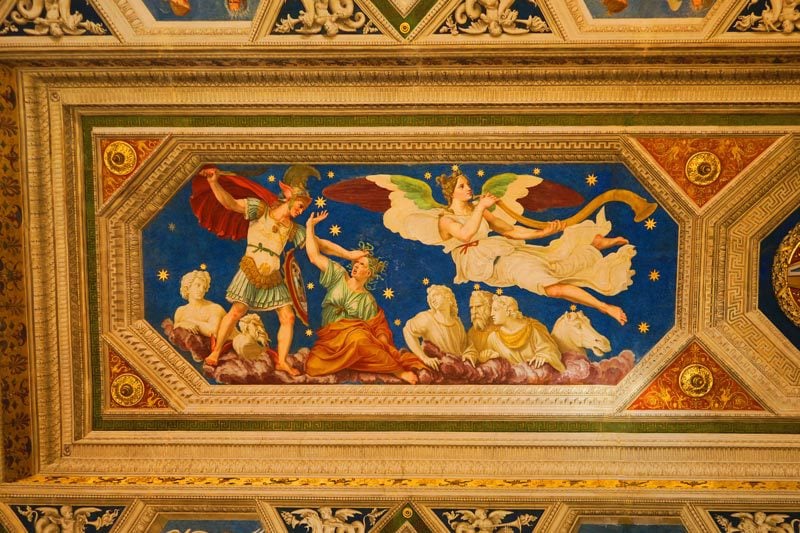
In the second room is the Loggia of Cupid and Psyche and the Council of the Gods. This fresco was designed by Raphael but others had to complete the job as the maestro took on too many projects and was occupied elsewhere.


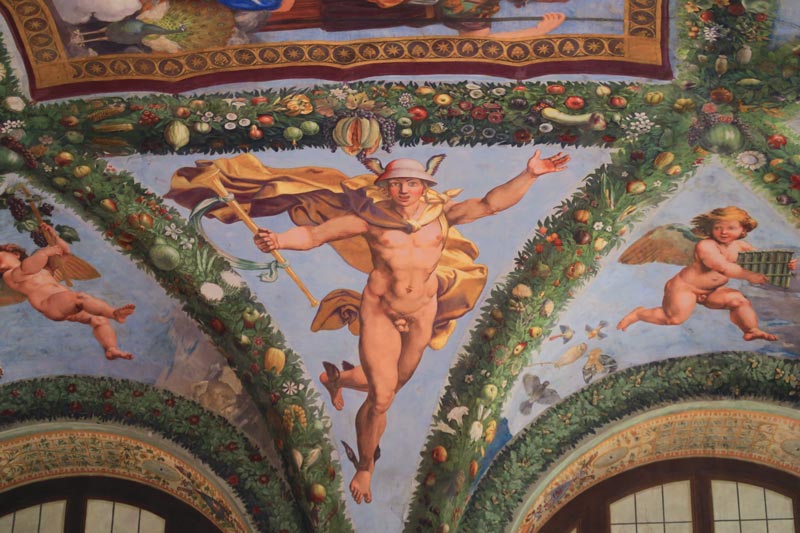
The final major highlight is the Room of the Frieze, a large horizontal painting wrapping the entire top section of this particular grand hall. An interesting feature in this room is the columns, painted in such a way that gives them a sort of two-dimensional feel.
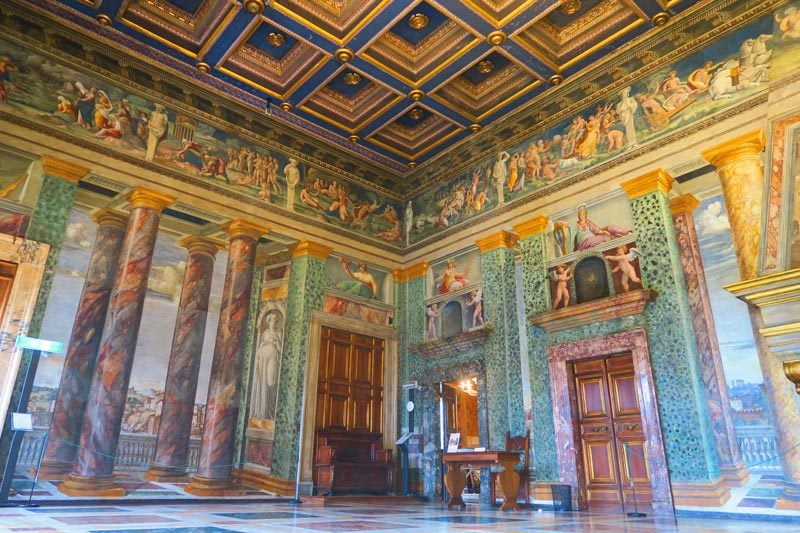
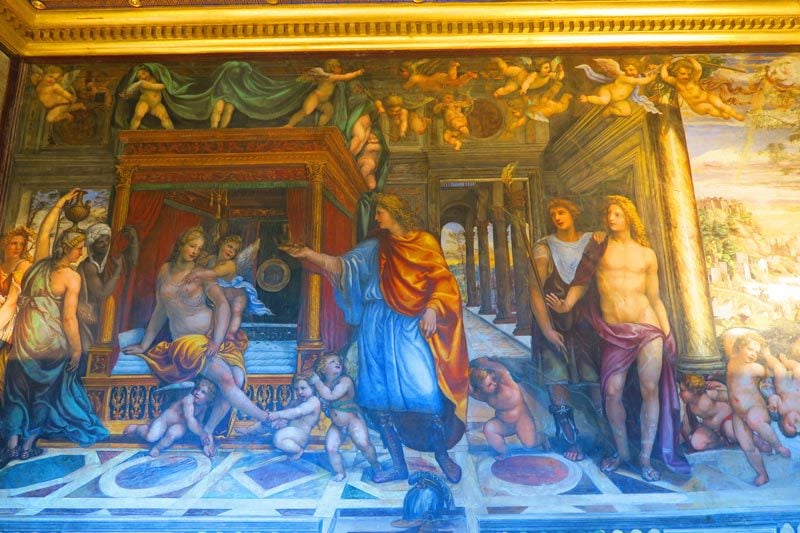
Where: Via della Lungara 230 in Trastevere
Opening times: Monday to Saturday from 9 am-2 pm, on the second Sunday of the month from 9 am to 5 pm.
Advanced tickets: not needed
Minimum time: 45 mins
Doria Pamphilj Gallery
Together with Villa Farnesina, the Galleria Doria Pamphilj is also off the major tourist radar and in my opinion, one of the best museums in Rome, especially for art lovers. The gallery is one of the largest private art collections in Rome, with works on display by the likes of Bernini and Velasquez. It takes residence in the Rococo-era Palazzo Doria Pamphilj, a 17th century grand mansion with much earlier origins and modest beginnings. The mansion is the culmination of multiple unions between some of Rome’s most powerful families.
It all started with Camillo Pamphilj from the powerful Maidalchini family, who gave up his cardinalship to marry the widowed Olimpia Borghese, despite Pope Innocent X’s disapproval who just happened to be Camillo’s uncle… The new couple moved into what was then a modest estate and began its expansion. One of their future daughters, Anna Pamphilj, married Genoese aristocrat Giovanni Andrea III Doria Landi in 1671 and that’s how we get the present name: Doria Pamphilj. Some members of the Doria Pamphilj family still live in the mansion, and visitors can tour parts of the residence (additional charge).
The tour of the picture gallery begins in the reception hall, where Camillo Pamphilj’s love of art is revealed with pretty much every inch of the walls covered with fine works commissioned over the years. Pamphilj commissioned paintings in nontraditional sizes to fit the curving lines of the mansion’s ceiling and any “leftover” space between large paintings.

After the grand entrance, guests would proceed to the ballroom for some entertainment. Both the ceiling and walls are exquisitely decorated. This is also the first room in which you notice a clever “trick” used by the designers, using many mirrors to reflect light and give the space a much larger and grander appearance. We’ll see this strategy in all its greatness at the next stop.

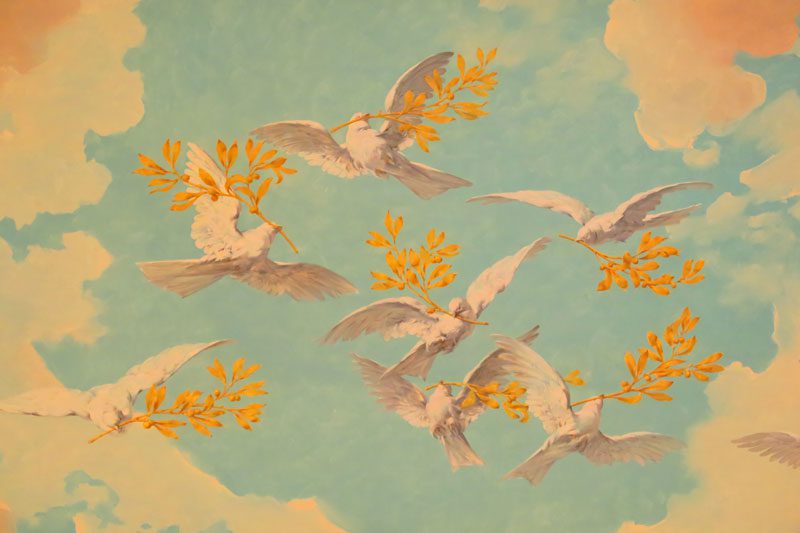
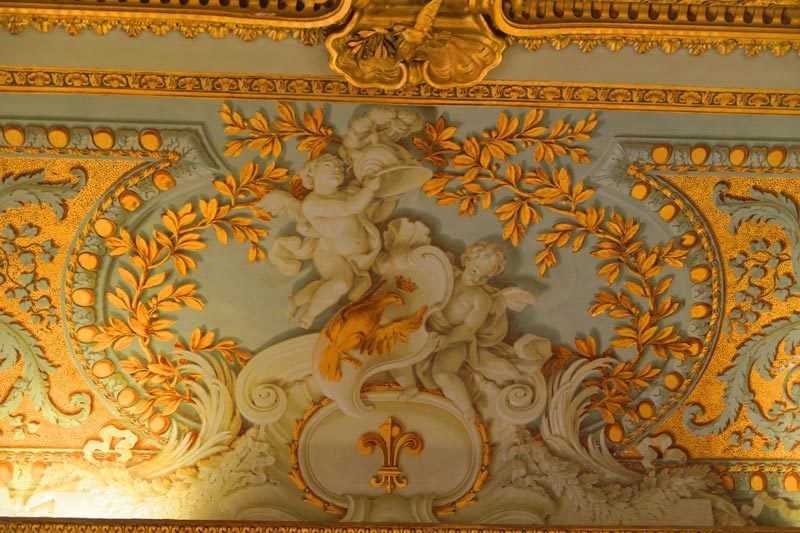
The most stunning feature in the picture gallery is the grand hall, reminiscent of a miniature version of the grand foyer in the Palais Garnier of Paris. The natural and artificial lighting in the grand hall, coupled with the ceiling painting and the walled mirrors create an illusion of walking on gold.
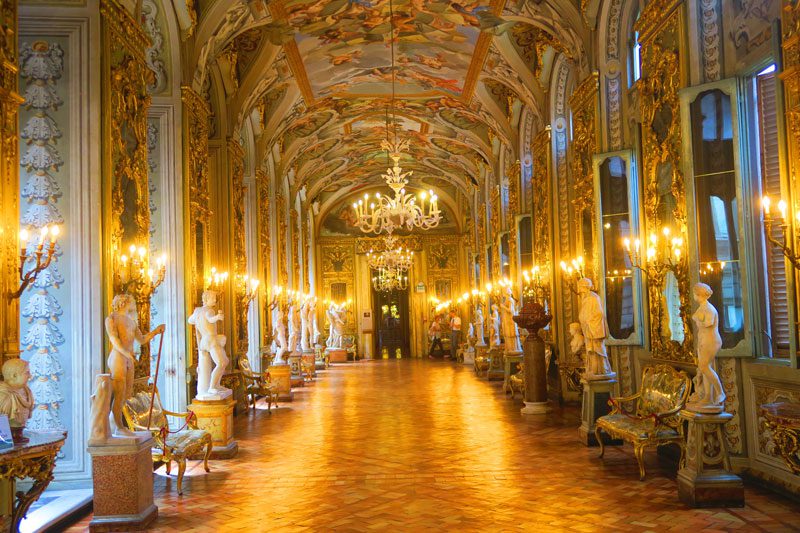
The tour then continues to guide you through the rest of the family’s collection, including several religious paintings, works by Velazquez and Bernini as well as Dutch and Flemish works. At this point, you can detour and check out the residence or continue to the final room to check out additional paintings and the family’s collections of marble sculptures.

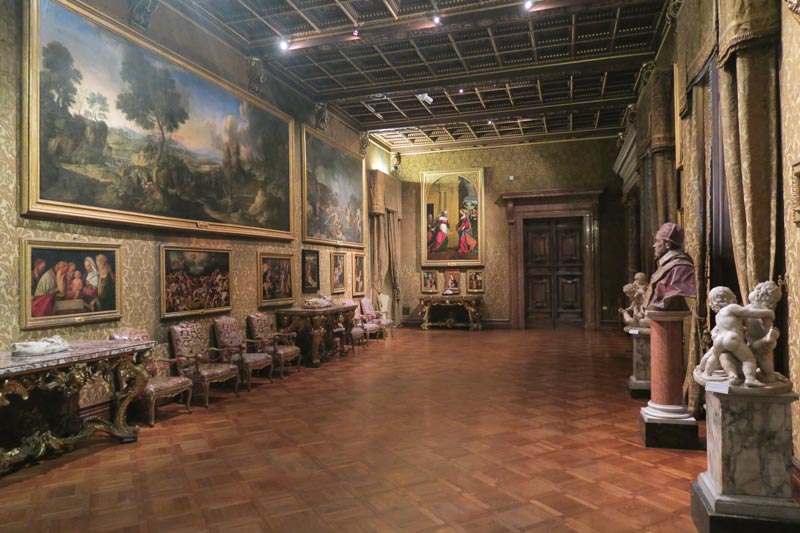

Where: Via del Corso 305, close to Piazza Venezia
Opening times: every day from 9 am-7 pm (last entry at 6 pm), except the third Wednesday of each month
Advanced tickets: not needed
Minimum time: 45 mins
Galleria Borghese
From one powerful family to another, the Galleria Borghese houses the art collection of the Borghese family who extended their influence from Siena to Rome during the 17th century. The collection is housed in a grand early 17th-century palace and is one of the most visited museums in Rome, so advanced tickets are an absolute must.
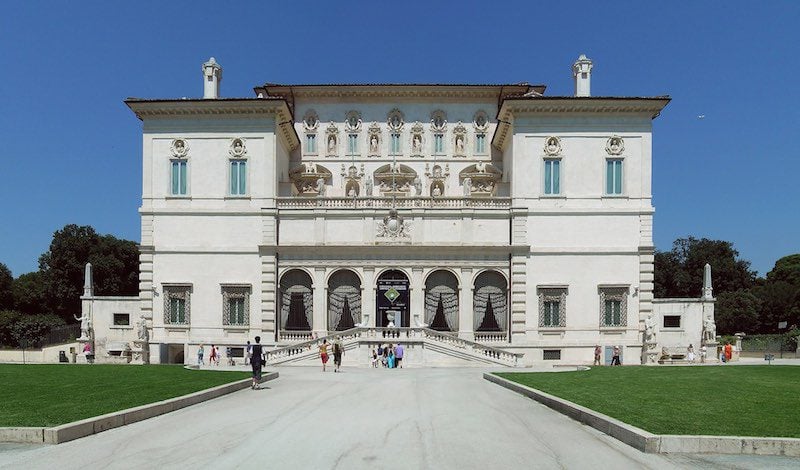
The hill overlooking Piazza del Popolo once marked the boundary between Rome and the countryside. During the Renaissance era (14th-17th centuries), this area was mostly converted to the summer residences of the city’s elite, including the Pope and the Borghese family.

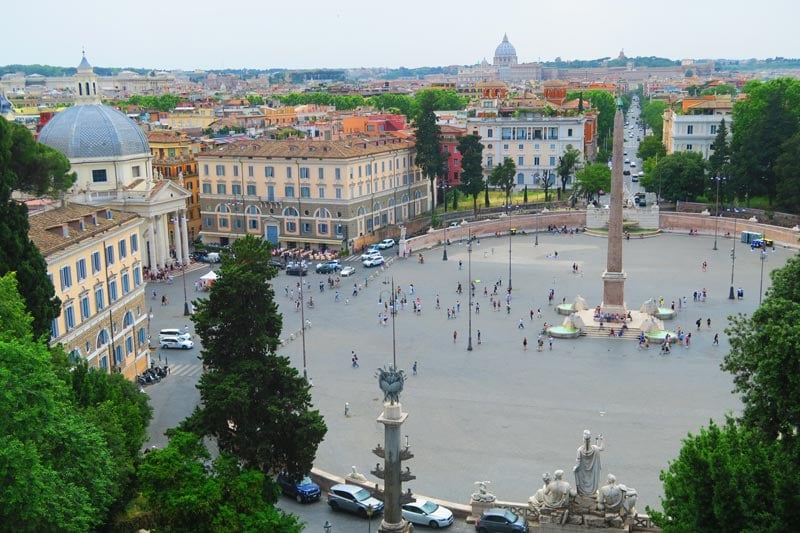
This should come as no surprise though, as one of the family members (Camillo Borghese) became Pope Paul V in 1605. The new pope appointed his nephew to a cardinal, a position of great power and influence. Cardinal Borghese turned out to be a real art lover, and he set out to amass a collection of whatever fine art he could get his hands on.
He eventually builds Casino Borghese, a mansion on the property that can house all of the family’s art collection. The mansion was extended, modified and renovated over the years, but it is here that you’ll explore twenty of its rooms that are loaded with art. Of the gallery’s prized possessions, it’s worth mentioning the collection of ancient Roman mosaics which date back to around the 4th century AD and one of the largest collections of Bernini sculptures, including Apollo and Daphne, and David.
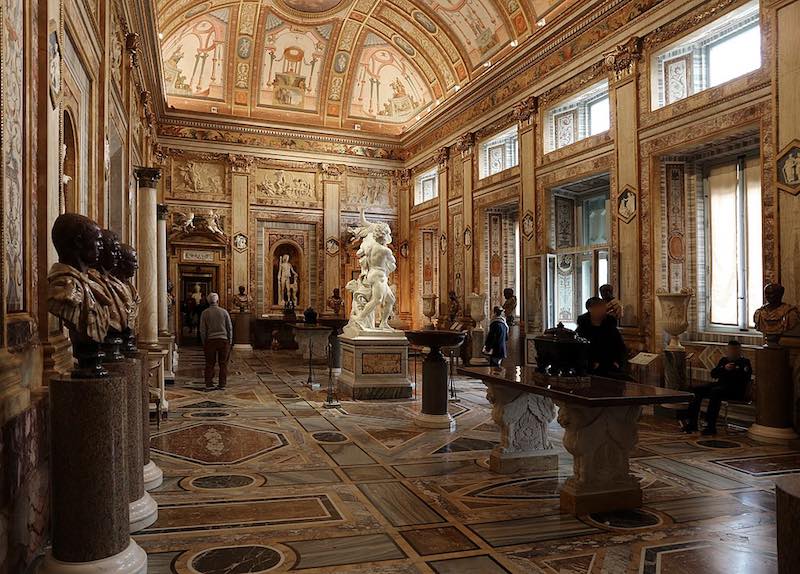

After you’ve made the rounds in the mansion’s two floors, you can explore the gardens and the Villa Borghese Park which is sort of “Rome’s Central Park” due to its size and location.
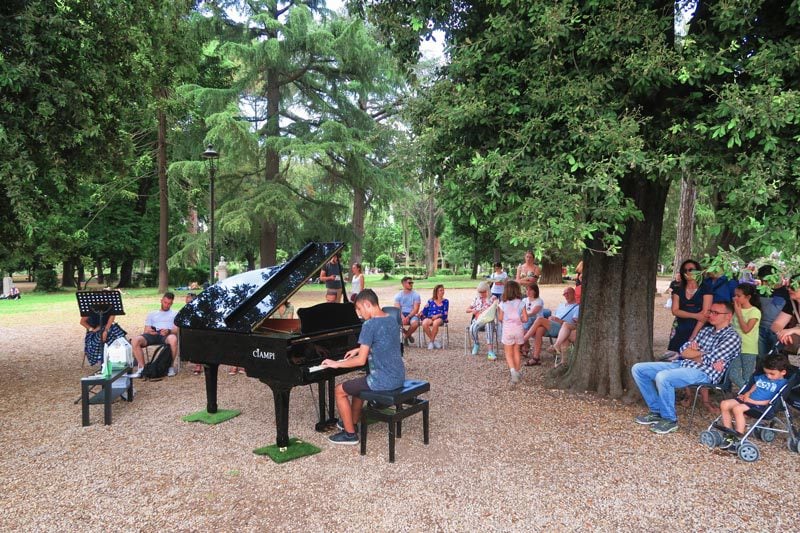

Where: Villa Borghese Park, just above Piazza del Popolo
Opening times: every day except Monday from 9 am-7 pm
Advanced tickets: an absolute must (purchase here)
Minimum time: 2 hours
Capitoline Museums
The elegant staircase known as Cordonata Capitolina leads to Michaelangelo’s perfectly proportioned Piazza del Campidoglio and the entrance to the Capitoline Museums. The Capitoline Hill was a strategic seat of power in ancient times and it is from its name that the word “capital” came to be. Behind it lay the ruins of Ancient Room and just behind the museum, there’s a worthy lookout even for non-museum goers.
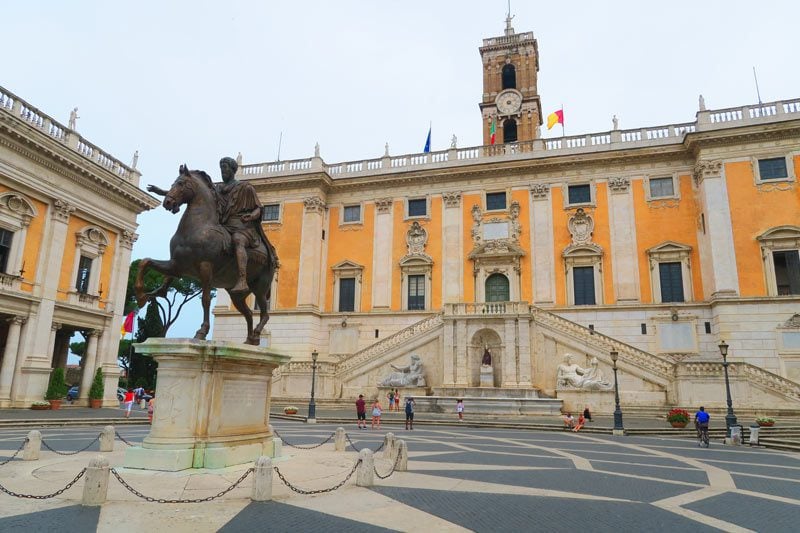
The main reason for climbing the hill is to visit the Capitoline Museums and its fine collection of sculptures and paintings. The museum “complex” is split into two separate buildings which likely helps to alleviate the congestion felt in other museums in Rome. These are the Palazzo Nuovo and the Palazzo dei Conservatori.
If you are pressed for time, focus your visit on the Palazzo dei Conservatori. Top highlights include the masterpiece bronze statue known as “She Wolf” which has become the symbol of Rome, fragments of what are thought to be sections in a massive statue of Emperor Constantine, paintings, and exquisitely sculpted sarcophagi.


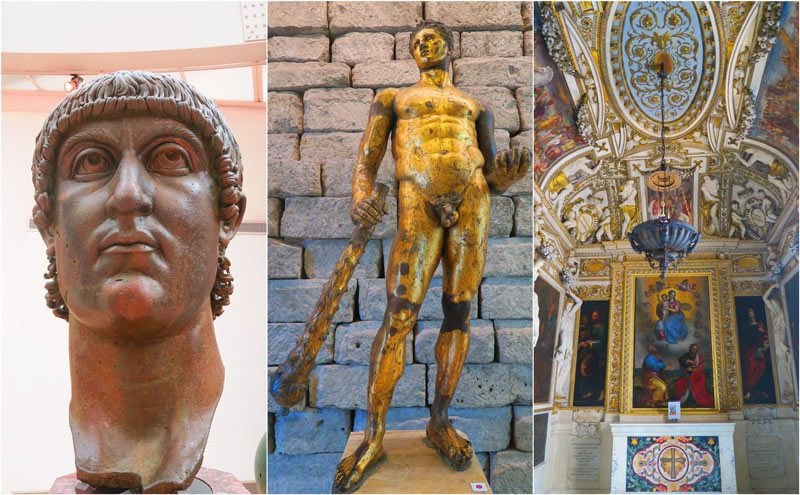

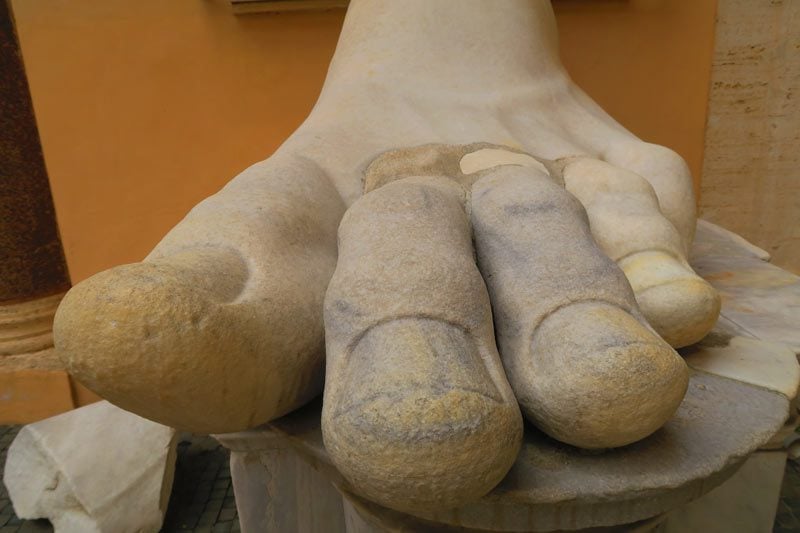
Where: Piazza del Campidoglio, just behind the Vittorio Emanuele Monument
Opening times: every day except Monday from s9:30am-7:30 pm
Advanced tickets: not a must but recommended in order to avoid queues (purchase here)
Minimum time: 1 hour
Roman Forum & Colosseum
More of an open-air museum rather than the “conventional” ones covered so far, the ancient Romans ruins of the Forum and Colosseum made this list of the best museums in Rome simply because they are a must-visit sight for any first time visitor to Rome. Sure, they are very crowded and you do need to use your imagination a bit since we’re talking about ruins, but the Forum and Colosseum offer an opportunity to experience the ancient empire in all its glory, like the ancient ruined city of Pompeii on the Amalfi Coast.
It is not technically necessary to see both sites in a single day, but I personally recommend dedicating the better part of a single day to cover both, beginning with the more crowded and logistically-challenging Colosseum.
The sheer scale of the Colosseum can only be appreciated from its interior, a massive stadium that stands the test of time (with lots of help) nearly 2,000 years after its construction. The Colosseum was used to stage gladiator battles, sometimes with ferocious animals thrown into the mix for an extra dose of fun. Archeologists are still peeling its layers and uncovering more secrets. You can explore the Colosseum’s upper and ground levels, or extend your visit with guided tours to more restricted areas.
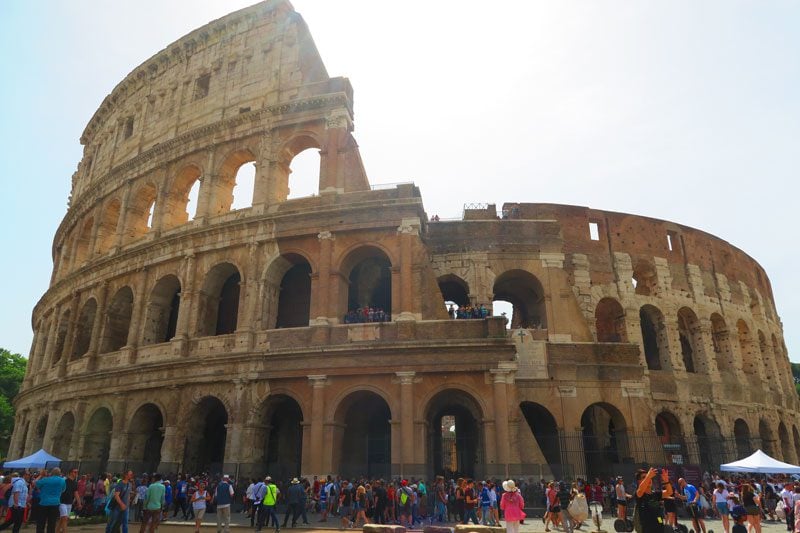

Built on a small patch of low-lying grassy wetland between the Capitoline and Palatine hills, the Roman Forum was essentially the “downtown” of Ancient Rome. After the site was properly drained, the Forum took shape and became the seat of its political and religious institutions, until relocation to the Imperial Forums when the site could no longer meet the needs of the growing empire.
Consequently, the Forum lost its luster and regression to its present state was accelerated by a great fire, the rise of Christianity and barbarian invasions. It was only in the 19th century that archaeologists began to unearth what we see today. Visitors to the Roman Forum must use their imagination to picture its former glorious state but, simply taking into account its age, a visit to the Forum is a must in my opinion.
If you’re visiting the Forum after the Colosseum, you’ll be entering via the Arch of Titus which commemorates the Roman victory in the Holy Land over the Kingdom of Judea. I then recommend veering left and climbing to Palatine Hill, a much quieter section. There’s a modest museum and lots of green space to rest amidst the ruins, but the real excuse for visiting Palatine Hill is the terrace in its gardens, offering unprecedented views of the Forum and Colosseum.

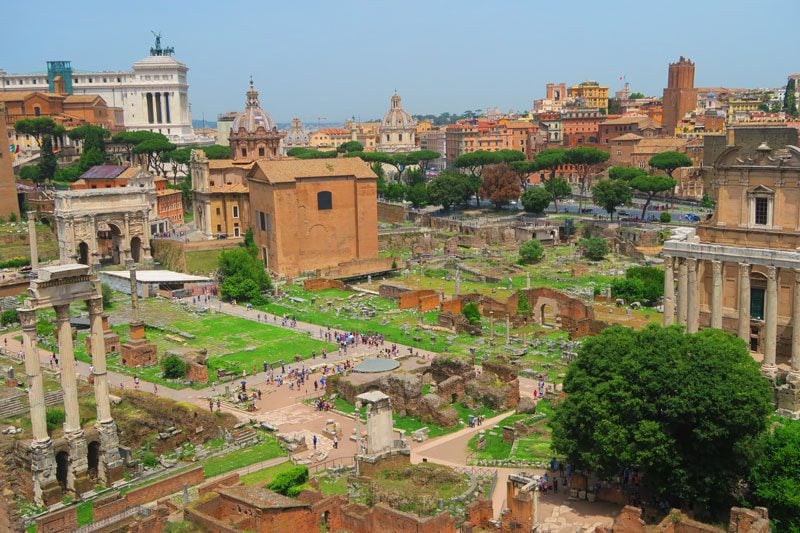

Back in the Arch of Titus, you are now free to explore the Forum. The best way is to simply stroll along the Via Sacra – the “main street” – and veer right or left whenever you see something of interest. The mix of fallen columns, Roman scriptures on marble slabs and structures still barely standing after thousands of years, make for an impressive visit.

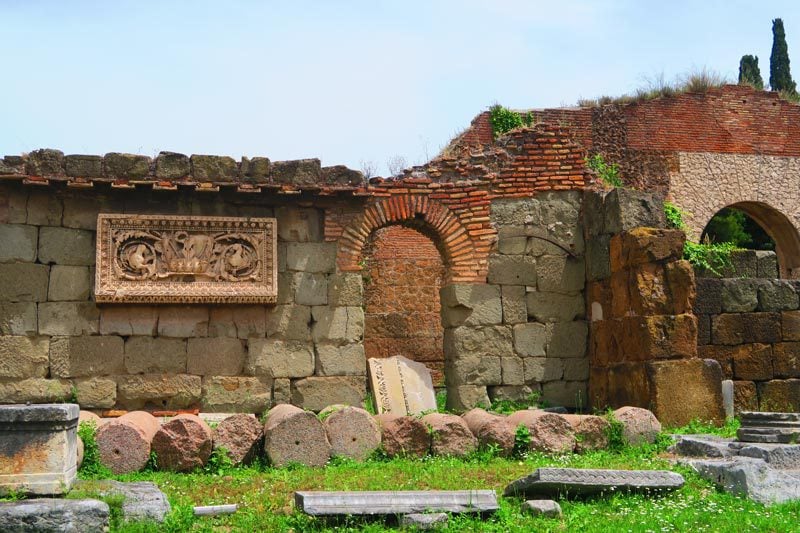

Where: Piazza del Colosseo
Opening times: every day from 8:30 am – 7:15 pm (summary months)
Advanced tickets: an absolute must (purchase here). For the Colosseum, you will also choose your entry time
Minimum time: 3 hours
Sant’angelo Castle
Adorned by Bernini’s angles on both sides, there’s no better way of crossing the Tiber River into the Vatican than over the Santangelo bridge, and you cannot miss the huge circular fortress that is Castel Sant’Angelo at its edge. The castle was built in the 2nd century AD by Emperor Hadrian as his mausoleum but, starting in the 14th century, the tomb was converted to a castle by the Papal court to serve in times of emergency. In fact, during the Sack of Rome in 1527, the Pope actually sought refuge inside the castle. The museum is divided into four sections and visitors have the chance to experience what luxury life inside the massive fortress might have felt like. There’s also an exhibition devoted to Medieval weaponry and the views from the top are not to be missed.

Where: St. Angelo Bridge
Opening times: every day except Monday from 9 am-7 pm
Advanced tickets: recommended (purchase here)
Minimum time: 1 hour
The Vatican Museums
Housed in the 15th-century Papal palace, the Vatican Museums are among the world’s finest, ranking right up there with the Louvre in Paris and maybe even surpassing its appeal. Over the centuries, the Vatican has amassed a near-infinite amount of treasures, some are hidden deep in its underground vaults and some of which are on display for ordinary visitors such as us.
The Vatican Museums are written in plural but essentially, we’re talking about a single complex with interconnected wings that are referred to as museums. The first highlight worth mentioning is the Pio-Clementino Museum, home to thousands of sculptures and artifacts from Ancient Greece and Egypt. The signature feature of this particular museum is the sculpture gallery, a long hall adorned on both sides by ancient works.


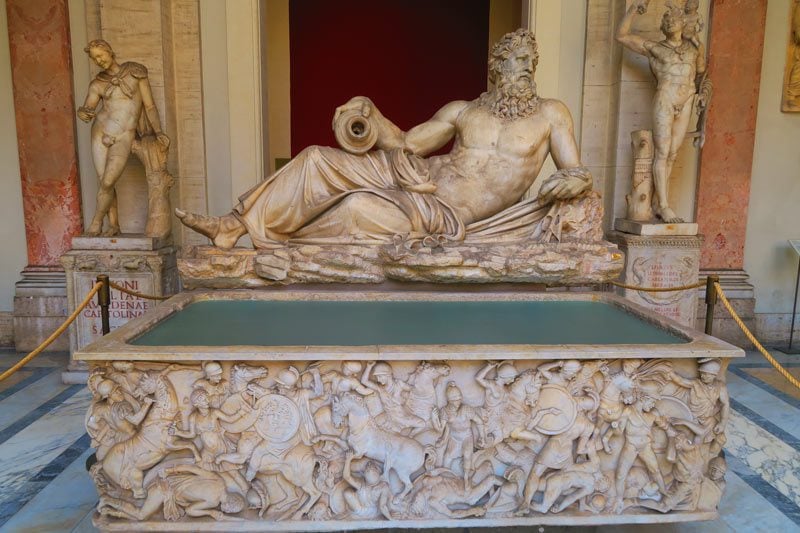

Next up is Galleria degli Arazzi with its massive display of tapestries, followed by one of my favorite stops – Galleria Delle Carte Geografiche. This long gallery displays exquisitely detailed 16th-century maps of Italy and the Mediterranean. As impressive as the giant maps are, don’t forget to look up and marvel at the frescoed ceiling.
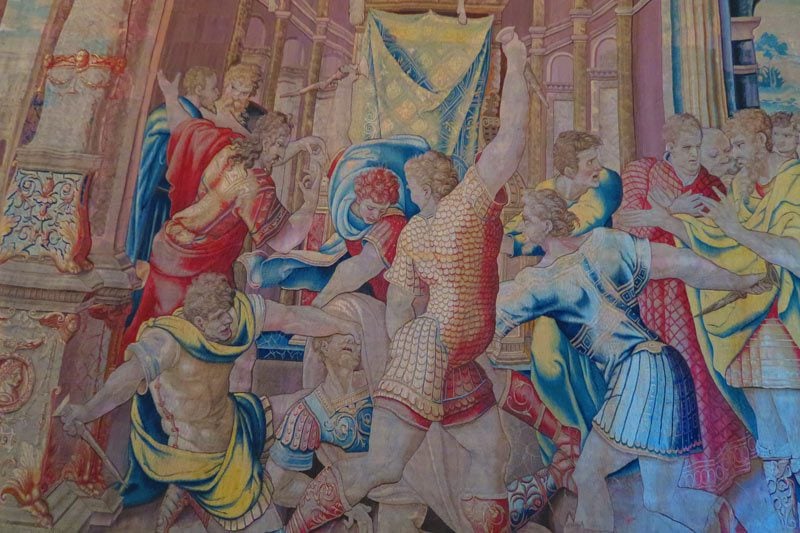
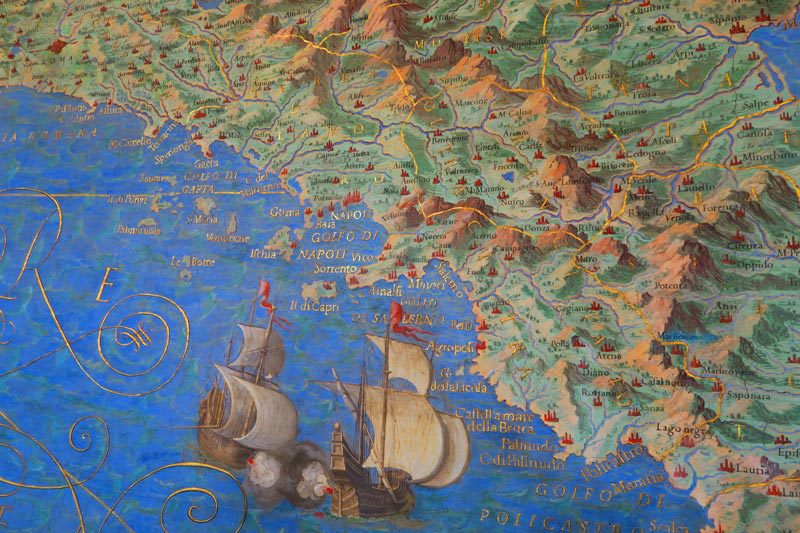

Moving along, the next major stop is in the set of rooms painted by master artist Raphael, known as the Raphael Rooms. When Pope Julius II moved into the palace, he commissioned the gifted artist to “decorate the place” and the result is a collection of grand religious paintings that didn’t leave a speck of white on the walls.
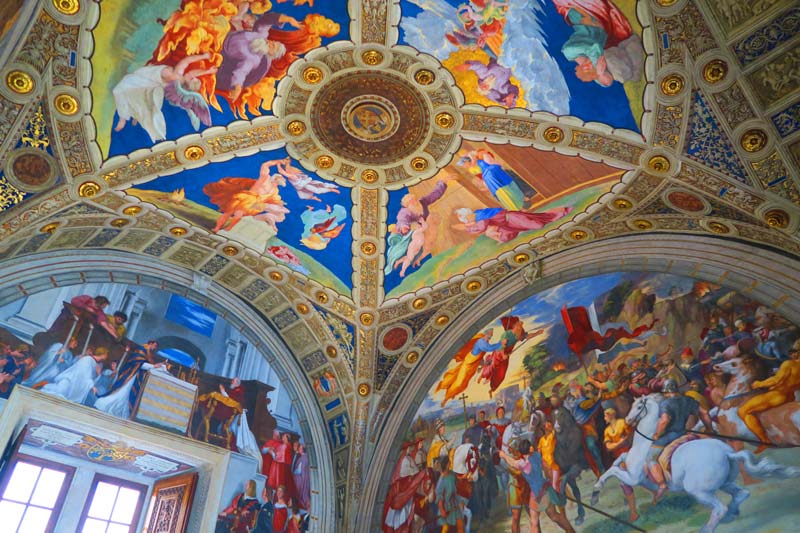
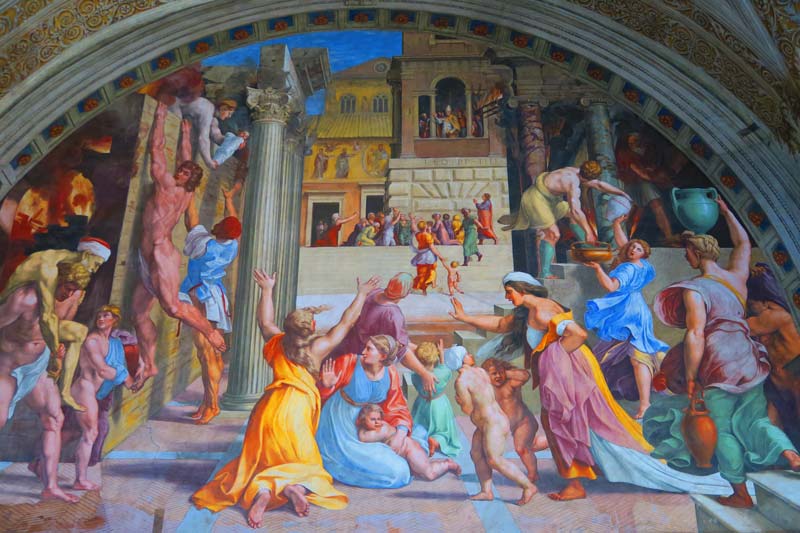
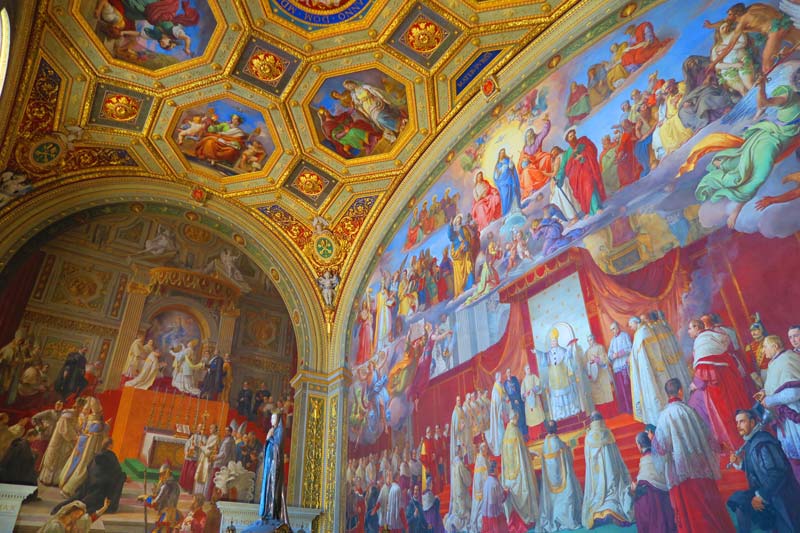
All tours must end with a climax and in the Vatican Museums, this means a rushed visit in Michaelangelo’s Sistine Chapel. Built in the late 15th century for Pope Sixtus IV, as its name suggests, this is a place of worship, where the Pope can pray in solitude if he wishes. The chapel is also where the conclave of cardinals meets to elect a new pope. As such, even with the never-ending stream of visitors, guards enforce a strict minute of silence inside the chapel every 10 minutes or so. Either for this reason or due to the volume of visitors in such a confined space, filming inside the chapel is strictly forbidden.
Lining the chapel’s walls are depictions from the Last Judgment, but it is the ceiling painting that trumps everything. Its signature painting of the Creation of Adam is where you’ll see the hand of God (nearly) touching man’s.

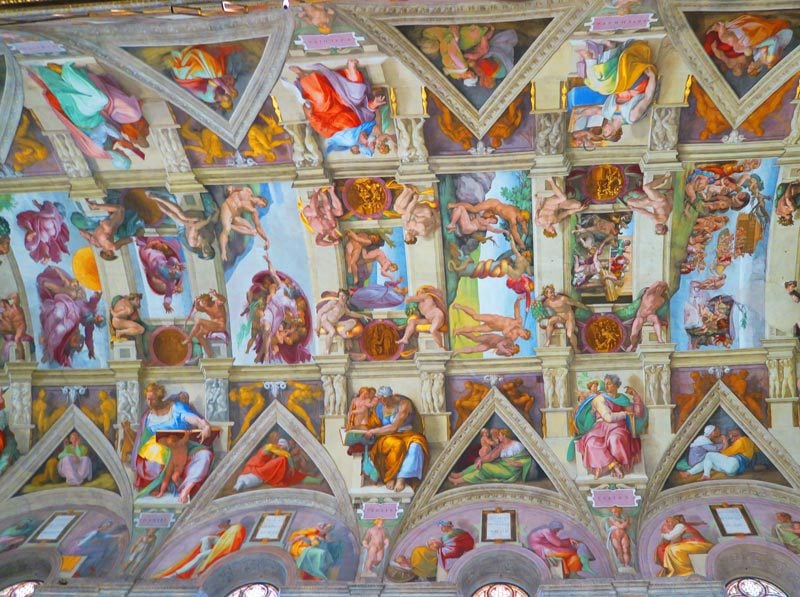

Where: Viale Vaticano 165
Opening times: daily except Sunday from 9 am-6 pm (final entry at 4 pm), last Sunday of the month from 9 am-2 pm (final entry at 12:30 pm)
Advanced tickets: an absolute must (purchase here)
Minimum time: 2 hours
What’s Next?
This covers my personal list of the best museums in Rome. Though there are obviously a lot more museums in the city, visiting the ones listed here ensures you get the “classic” Rome experience while also visiting a few lesser-known museums in Rome. Be sure to check out the rest of the Rome travel guide collection, including Rome travel tips, day-by-day Rome itinerary, the best places to eat and lots more.

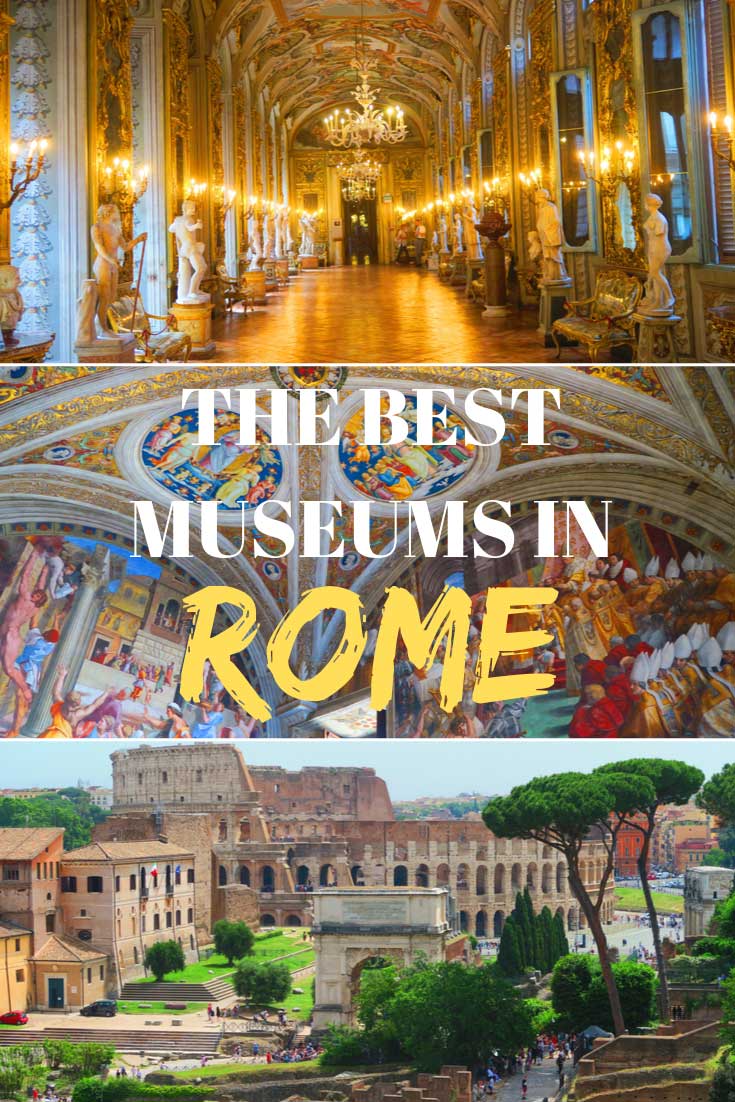
Pin These Images To Your Favorite Boards!
